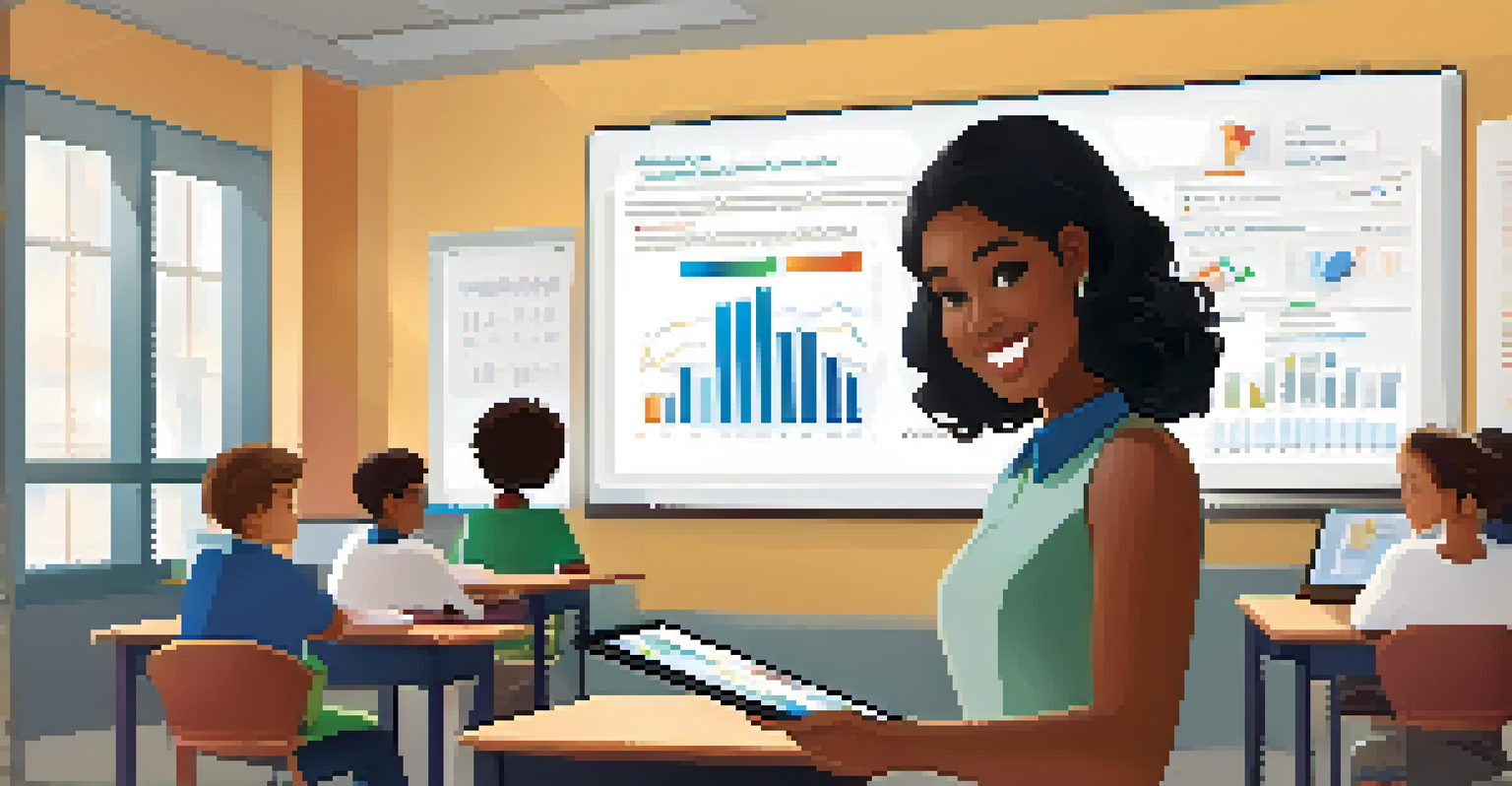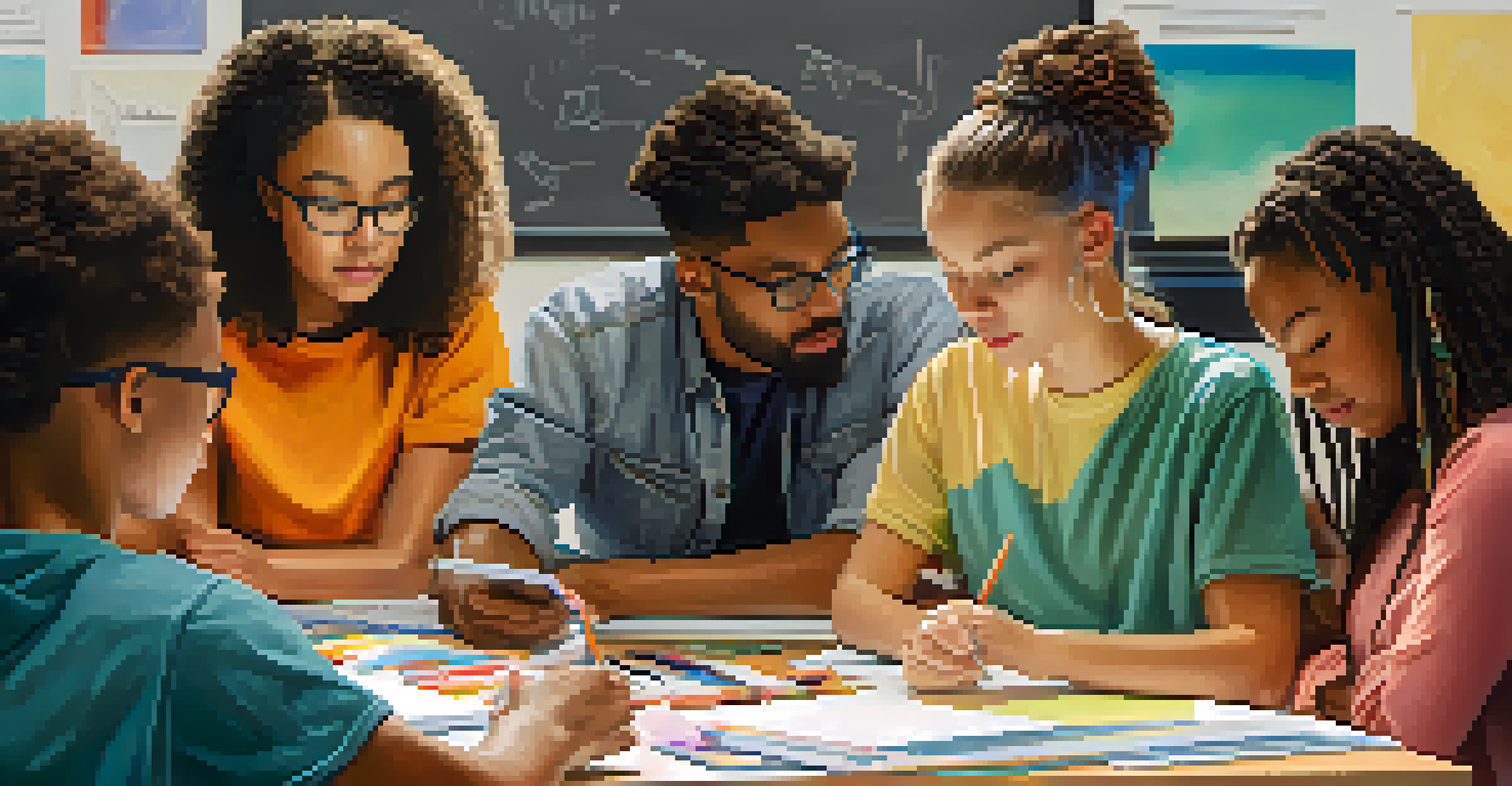The Future of Blended Assessment in Educational Settings

Understanding Blended Assessment: A New Approach to Learning
Blended assessment combines traditional testing methods with innovative techniques, creating a more holistic evaluation of student performance. This approach recognizes that students learn in diverse ways, allowing educators to assess knowledge through various formats, such as projects, presentations, and digital portfolios. By merging both formative and summative assessments, teachers can gain a comprehensive view of a student's understanding and skills.
The future of education is not about the content we teach, but about how we teach it.
Imagine a classroom where a student can showcase their learning through a video presentation instead of just a written exam. This flexibility not only caters to different learning styles but also encourages creativity and critical thinking. As education evolves, blended assessment offers a pathway to more personalized and meaningful learning experiences for students.
Ultimately, embracing blended assessment means moving away from a one-size-fits-all mentality and recognizing the unique strengths of each learner. This shift can foster a more inclusive environment, where every student has the opportunity to shine and demonstrate their capabilities.
The Role of Technology in Blended Assessment
Technology plays a crucial role in facilitating blended assessment, providing tools that allow for varied and dynamic evaluation methods. With the rise of online platforms and digital resources, educators can easily integrate multimedia elements into assessments, making them more engaging for students. For instance, using educational apps or learning management systems can streamline the assessment process and provide instant feedback.

Moreover, technology enables the collection of real-time data on student performance, allowing teachers to adjust their instructional strategies accordingly. This data-driven approach not only helps identify areas for improvement but also supports differentiated instruction tailored to individual student needs. Imagine a scenario where a teacher can quickly analyze a student's progress and adapt their teaching methods on the fly.
Blended Assessment Enhances Learning
This approach allows for diverse evaluation methods, catering to individual learning styles and fostering creativity.
As we look to the future, the integration of artificial intelligence and machine learning in assessment tools could further enhance personalized learning experiences. These technologies can analyze student interactions, predict learning challenges, and suggest tailored resources, making assessment an even more integral part of the learning journey.
Benefits of Blended Assessment for Students
Blended assessment offers numerous benefits for students, including increased engagement and motivation in their learning process. When students have the opportunity to express their understanding in various formats, they are more likely to take ownership of their education. This engagement can lead to a deeper understanding of the material and a greater appreciation for the subject matter.
Assessment is an integral part of the learning process, and when done effectively, can enhance the educational experience for both students and teachers.
Additionally, this approach encourages the development of critical skills such as collaboration, communication, and problem-solving. For instance, working on group projects allows students to learn from one another while honing their ability to work as a team. These skills are essential not only in academic settings but also in future workplaces.
Furthermore, the emphasis on continuous feedback in blended assessment helps students identify their strengths and areas for growth. Instead of waiting for a final grade, they receive ongoing insights that empower them to improve and succeed. This shift from a focus on grades to a focus on learning can dramatically enhance a student's educational experience.
Challenges of Implementing Blended Assessment
While blended assessment presents exciting opportunities, it also comes with its own set of challenges. One significant hurdle is the need for teacher training and professional development. Educators must feel confident in utilizing new technologies and assessment methods to effectively implement blended assessment practices in their classrooms.
Another challenge is ensuring equitable access to technology for all students. Not every learner has the same resources at home, which can create disparities in assessment participation. Schools must work to bridge this digital divide to provide all students with the tools they need to succeed in a blended assessment environment.
Technology Supports Assessment Flexibility
Utilizing digital tools enables real-time data collection and personalized feedback, improving the assessment experience.
Finally, there is the question of standardization and consistency in assessments. Educators must find a balance between personalized evaluation and maintaining rigorous academic standards. Developing clear guidelines and criteria for assessments will be essential in ensuring that blended assessments are both fair and effective.
The Role of Educators in Blended Assessment
Educators play a pivotal role in the success of blended assessment by designing assessments that are both meaningful and relevant to their students' lives. They must curate a variety of assessment methods that not only align with curriculum goals but also resonate with students' interests. This requires creativity and flexibility, as well as a willingness to adapt to the ever-changing educational landscape.
Moreover, teachers must act as facilitators in the learning process, guiding students through self-assessment and reflection. By encouraging learners to evaluate their own progress, educators help them develop a growth mindset, enabling them to see challenges as opportunities for improvement. This aspect of blended assessment fosters greater student agency and responsibility.
In addition to instructional roles, educators must also engage with parents and the community to emphasize the importance of blended assessment. By sharing the benefits and successes of this approach, teachers can build a supportive network that enhances the overall educational experience for students.
Future Trends in Blended Assessment
As education continues to evolve, we can expect to see several key trends in blended assessment. One significant trend is the increased use of adaptive learning technologies, which tailor assessment experiences to meet individual student needs. These tools can provide personalized pathways for learning, ensuring that each student progresses at their own pace.
Another emerging trend is the emphasis on competency-based education, where students are assessed based on their mastery of specific skills and knowledge rather than time spent in the classroom. This approach aligns well with blended assessment, as it allows for a more individualized evaluation of student progress and achievement.
Challenges Require Educator Adaptation
Successful implementation hinges on teacher training and equitable access to technology for all students.
Lastly, we may see a growing focus on social-emotional learning (SEL) within assessments. Recognizing the importance of emotional intelligence and interpersonal skills, educators are likely to incorporate SEL components into blended assessments, fostering well-rounded development for students.
Conclusion: Embracing the Future of Blended Assessment
In conclusion, the future of blended assessment holds great promise for enhancing educational experiences for both students and educators. By combining diverse assessment methods with the power of technology, we can create a more inclusive and engaging learning environment. This approach not only evaluates knowledge but also nurtures essential skills that will prepare students for success beyond the classroom.
As we embrace this shift, it is crucial for educators to collaborate, share insights, and continuously refine their assessment practices. The journey toward effective blended assessment is ongoing, and by working together, we can create a brighter future for all learners.

Ultimately, blended assessment is about recognizing the individuality of each student and celebrating their unique learning journeys. By prioritizing personalized, meaningful assessments, we can inspire a generation of learners who are equipped to thrive in an ever-changing world.